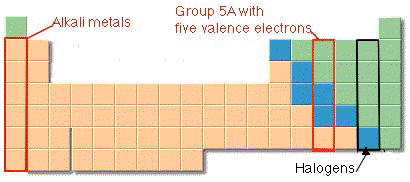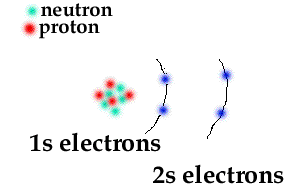Online Introductory Chemistry
Answers to atoms, isotopes, electron configuration, groups and periodic table self test
|
1. |
What is the number of electrons, protons and neutrons in an atom of radon-224? |
||||||||||
|
|||||||||||
|
2. |
|
|
3. |
|
|
|
|
4. |
Write the electron configuration for an atom with 17 electrons. Mark the valence electrons. What is the identity and group for this element? |
|
|
|
5. |
Sketch an atom of beryllium-9. Indicate the number of neutrons and protons in the nucleus. Show the relative average distances out from the nucleus for the electron subshells. Identify the valence electrons. Tell whether or not this element is an s-block element. |
|||
|
||||


